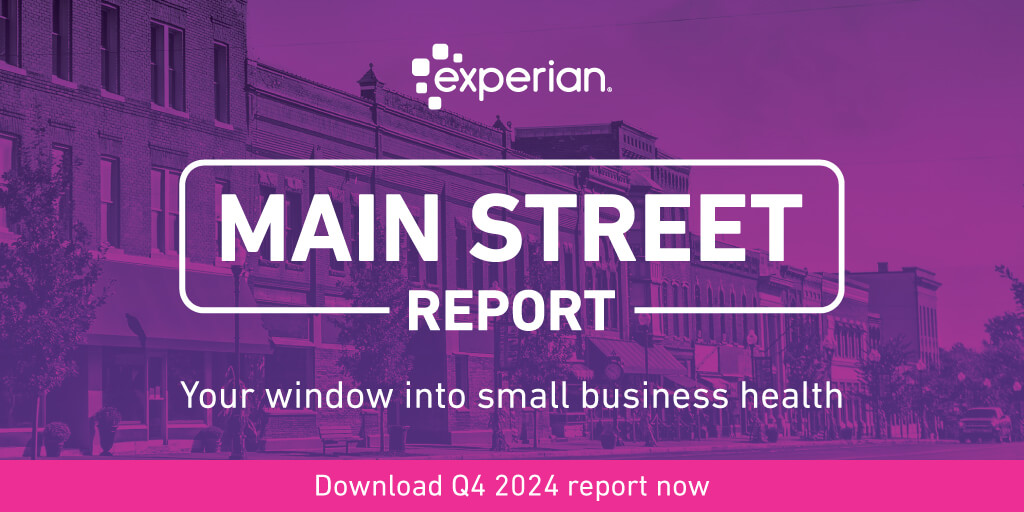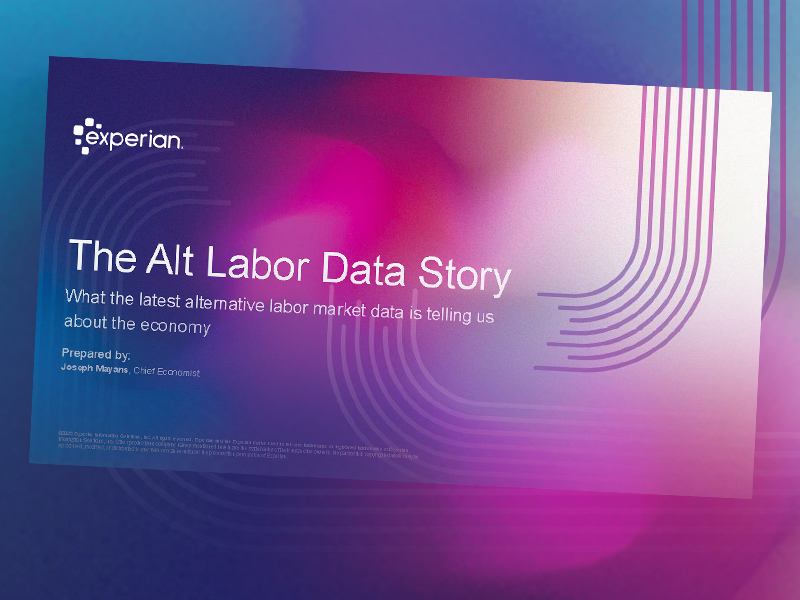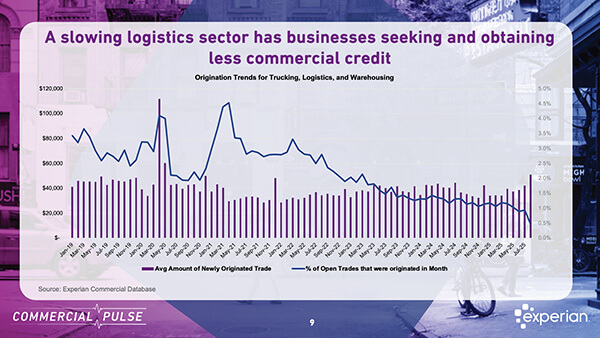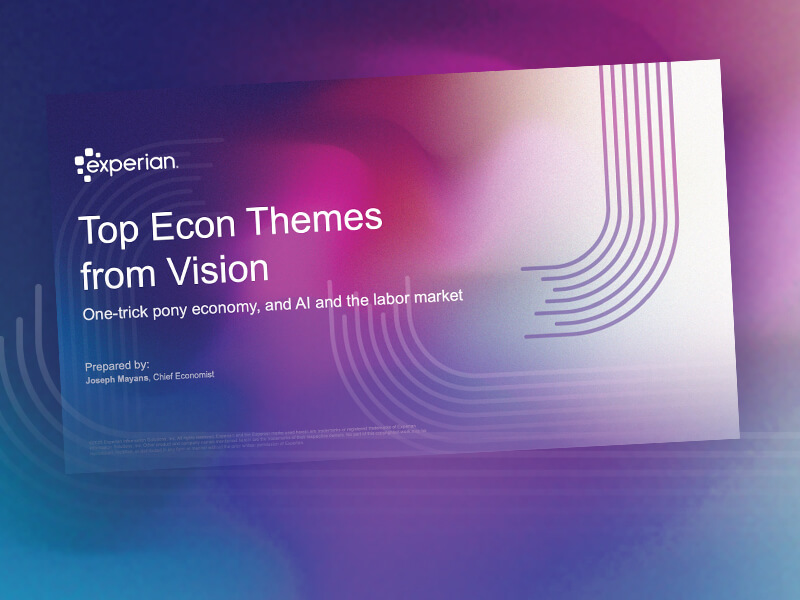Report
Here we goooo!
Published February 25, 2025
Commercial Commercial Insights Credit & Economic Trends Economic & Market Insights
The U.S. small business landscape entered 2025, navigating short-term volatility as the new administration began implementing policy changes amid ongoing global uncertainties. Throughout the fourth quarter of 2024, the election cycle introduced expectations of tax policy adjustments, government efficiency initiatives, and regulatory reforms aimed at bolstering U.S. consumers and small businesses; however, uncertainty over the scope and timing of these policies led to cautious lending and business investment. Inflationary pressures persisted, keeping borrowing costs elevated, while global risks, ranging from energy price fluctuations to supply chain disruptions, added complexity to the operating environment.
Consumer resilience remained a key stabilizer, yet signs of spending fatigue emerged, raising concerns about demand sustainability. Despite these headwinds, strong cash flows and solid holiday spending encouraged lenders to signal a measured easing of underwriting standards. As 2025 progresses, small businesses must stay agile, adapting to evolving domestic policies and global market shifts to seize opportunities and sustain growth in a changing landscape.
Download report
This site is protected by reCAPTCHA and the Google Privacy Policy and Terms of Service apply.
Thank you
Your report should open in a new tab.
 Report
Report
The Alt Labor Story
The longest U.S. government shutdown has paused official labor data, but private-sector insights reveal key trends shaping the job market. Alternative sources show slowing job creation, modestly higher unemployment, and signs of resilience consistent with the Fed’s outlook.
- Job growth weakened in late 2025 across major indicators
- Layoff announcements rose, but claims remain low
- Unemployment edged up in line with Fed projections
- Labor market stress remains relatively contained
 Webinar
Webinar
Macroeconomic forecasting and credit trends - November 2025
As we step closer to 2026, all eyes remain on the economic outlook, the labor market and consumer health. Experian’s Chief Economist Joseph Mayans, Director of Fintech Gavin Harding and Solution Insights Director Amanda Roth, will provide a look into:
- The latest economic and credit trends
- Labor market and consumer health
- Student loan update
 Video
Video
Rising Delinquencies Signal Growing Risk in Transportation & Warehousing
As the U.S. economy continues to recalibrate post-pandemic, the transportation and warehousing segments of the logistics sector are signaling caution. While the broader logistics industry has remained in expansion mode, Experian’s latest Commercial Pulse Report reveals that delinquencies are rising—an early warning of growing risk in two of the economy’s most critical subsectors.
Check out the full report to see how these trends could impact your strategy!
 Report
Report
Top Econ Themes from Vision
The U.S. economy continues to surprise with its resilience - growth forecasts are improving, equity markets are hitting new highs, and fears of an imminent recession are fading. Joseph Mayans’ Vision 2025 session, “Navigating 2026: Global Macro Shifts, U.S. Credit Trends and the Evolving Lending Landscape,” explored the economic forces shaping the next year - from the AI-driven equity boom to structural vulnerabilities in the white-collar labor market. His key takeaway: while AI innovation is fueling growth and optimism, it also introduces new dependencies and risks that will define the next economic chapter.
Highlights:
- The AI Trade’s Dominance: Economic optimism is increasingly tied to the AI investment cycle—AI spending fuels stock gains, which in turn sustain higher-income consumer spending.
- Potential Vulnerability: Overreliance on AI-driven growth leaves the economy exposed if those massive investments fail to deliver expected productivity gains.
- Labor Market Shifts: AI is intensifying existing white-collar labor market imbalances—more graduates, fewer roles, and increasing automation pressure.
- Credit Market Implications: Rising white-collar vulnerability poses a growing risk for prime credit segments, especially if economic momentum slows.
- Future Readiness: As Sol Rashidi emphasized, humans’ edge lies in creativity and critical thinking—skills that should be strengthened, not outsourced, to AI.